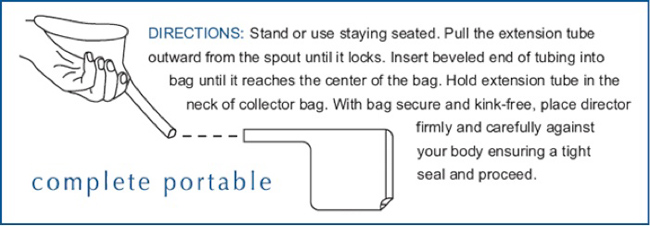SAVANNAH, GA USA (UroToday.com) - Dr. Linda Yoder began the lecture by noting that her co-presenter, LTC Nancy Steele, PhD, RN, WHNP-BC, Chief, Center for Nurse Science and Clinical Inquiry, Womack Army Medical Center, FT Bragg, NC was not present but the presentation was based on Dr. Steele’s research on voiding habits of female soldiers. She noted that although this research was sponsored by the TriService Nursing Research Program, Uniformed Services University of the Health Sciences, the information, or content and conclusions, do not necessarily represent the official position or policy of, nor should any official endorsement be inferred by, the TriService Nursing Research Program, the Uniformed Services University of the Health Sciences, the Department of Defense, or the U.S. Government.
 She noted that women have been part of the military since the Revolutionary War and currently comprise 14-15% of the force with slightly more than 95% of military positions now open to women. Dr. Yoder feels that eventually 100% of military positions will be open to women. More than 200 000 women have served in support of Operation Iraqi Freedom (OIF) and Operation Enduring Freedom (OEF), and as of August 2012, women have served approximately 300 000 tours of duty in support of OIF/OEF. They also have other roles in humanitarian and relief missions (e.g. hurricane Katrina).
She noted that women have been part of the military since the Revolutionary War and currently comprise 14-15% of the force with slightly more than 95% of military positions now open to women. Dr. Yoder feels that eventually 100% of military positions will be open to women. More than 200 000 women have served in support of Operation Iraqi Freedom (OIF) and Operation Enduring Freedom (OEF), and as of August 2012, women have served approximately 300 000 tours of duty in support of OIF/OEF. They also have other roles in humanitarian and relief missions (e.g. hurricane Katrina).
But in most cases, these missions take place in austere environments (e.g. crowded living arrangements, limited toilet, shower, and laundry facilities, unsanitary conditions, lack of privacy, and increased safety and security concerns. Dr. Yoder showed pictures of the makeshift tents of these environments where cleanliness is a challenge and can lead to feminine hygiene and GU problems (e.g. difficulty urinating). Urination can also pose safety issues in certain locations -- as when the female soldiers are traveling out into a mountainous region on a tank. Urination for women is in latrines, which may not always be available, and often are unsanitary when available. Dr. Yoder showed pictures of the military uniforms and all the equipment a soldier carries making it obvious that removal of gear to void is challenging. Military women report 4 practices in relation to voiding including restricting fluid intake, holding urine for an extremely long time, squatting to urinate by holding cans or bottles to the perineum, and wearing several layers of perineal pads or incontinence briefs to contain the urine.
Dr. Yoder presented data on UTIs, noting that nearly 10% of deployment outpatient visits during 2006-2008 were military women with UTIs, with 1.3% requiring hospitalization. But in the war zones, hospitals are not always accessible, and 0.5% of these episodes resulted in air evacuation to a medical center in Europe. In comparison, only .05% of deployed men sought treatment for UTIs. The speaker also presented the negative outcomes of these infections which included inferior work performance (48%, n=841) and lost time from work (24%) -- both of which can result in reduced readiness of the military force. Dr. Yoder stated that their preparation for deployment is lacking in guidance about female health, thus laying the responsibility on each female soldier. There is a “voiding aid” available to female soldiers called a “female urinary diversion device” or FUDD. An example of this device can be found at www.freshette.com/portable.html.

Dr. Yoder showed pictures of women using this device, and the posture most often used was upright with knees slightly bent. She noted there is little research on this product, and she and Dr. Steele are conducting research on its use by military women. According to Palmer and colleagues (2012), current consensus is that bladder emptying should be accomplished by adopting a relaxed position and allowing time for the bladder to empty completely. But voiding postures are dictated by social practices and the toileting environment. Instruments are being developed to document women’s toileting behavior (Wang & Palmer, 2011, Wang & Palmer, 2010) and Drs. Yoder and Steele should be commended for highlighting the difficulty encountered by military women when attempting to urinate.
Presented by Linda H. Yoder PhD, MBA, RN, AOCN, FAAN at the Society of Urologic Nurses and Associates (SUNA) 2013 Annual Symposium - March 7 - 9, 2013 - Hyatt Regency - Savannah, GA USA
University of Texas at Austin, School of Nursing
Reported by Diane K. Newman, DNP, FAAN, BCB-PMD
View all UroToday conference coverage



